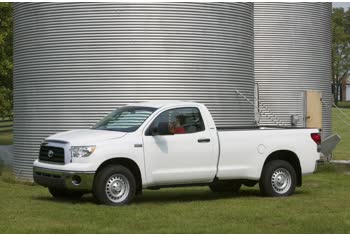Everything you need to know about specifications and performance - Toyota FJ Cruiser FJ Cruiser 2010 - 4.0 V6 (260 Hp) Automatic

Overview:
What is the engine capacity of a Toyota FJ Cruiser 2010?
The engine capacity of the Toyota FJ Cruiser 2010 is 3956.
Toyota FJ Cruiser 2010 How many horsepower?
The engine power of the Toyota FJ Cruiser 2010 is 260 Hp @ 5600 rpm..
What is the Toyota FJ Cruiser 2010 engine?
Toyota FJ Cruiser 2010 engine is 1GR-FE. (Click to see other cars using the same engine)
General:
Brand: Toyota
Model: FJ Cruiser
Generation: FJ Cruiser
Modification (Engine): 4.0 V6 (260 Hp) Automatic
Start of production: 2010
End of production: 2014
Powertrain Architecture: Internal Combustion Engine
Body type: Off-road vehicle, Sports Utility Vehicle (SUV)
Seats: 5
Doors: 5
Engine:
Power: 260 hp @ 5600 rpm.
Power per litre: 65.7 hp/l
Torque: 367 nm @ 4400 rpm.
Engine Model/Code:1GR-FE
Engine displacement: 3956
Number of cylinders: 6
Engine configuration: V-engine
Number of valves per cylinder: 4
Fuel injection system: Multi-port manifold injection
Engine aspiration: Naturally aspirated Engine
Valvetrain: DOHC, Dual VVT-i
Engine oil capacity: 6.1 l
Coolant: 9.8 l
Engine layout: Front, Longitudinal
Cylinder Bore: 94 mm
Piston Stroke: 95 mm
Compression ratio: 10.4:1
Performance:
Fuel Type: Petrol (Gasoline)
Fuel consumption (economy) - urban: 13.8 l/100 km
Fuel consumption (economy) - extra urban: 10.7 l/100 km
Emission standard: LEV-II
Weight-to-power ratio: 7.1 kg/Hp, 140.5 Hp/tonne
Weight-to-torque ratio: 5 kg/Nm, 198.4 Nm/tonne
Space:
Kerb Weight (kg): 1850
Max. weight (kg): 2418
Max load (kg): 568
Trunk (boot) space - maximum: 1892 l
Trunk (boot) space - minimum: 790 l
Permitted trailer load with brakes (12%): 2268 kg
Fuel tank capacity: 72 l
dimensions:
Ramp-over (brakeover) angle: 26°
Length: 4671 mm
Width: 1905 mm
Height: 1811 mm
wheelbase: 2690 mm
Front track: 1605 mm
Rear (Back) track: 1615 mm
Ride height (ground clearance): 221 mm
Minimum turning circle (turning diameter): 12.4 m
Approach angle: 32°
Departure angle: 30°
Powertrain, Suspension and Brakes:
Drivetrain Architecture: The Internal combustion Engine (ICE) drives the rear wheels of the vehicle.
Drive wheel: Rear wheel drive
Number of gears and type of gearbox: 5 gears, automatic transmission ECT-i
Front brakes: Disc
Rear brakes: Ventilated discs
Assisting systems: ABS (Anti-lock braking system)
Steering type: Steering rack and pinion
Power steering: Hydraulic Steering
Tires size: 265/70 R17
Wheel rims size: 7.5J x 17
Front suspension: Double wishbone, Transverse stabilizer
Rear suspension: Independent multi-link Spring suspension with stabilizer
See also

Same engine. (1GR-FE).
Its production began in 2006 until 2009

Same engine. (1GR-FE).
Its production began in 2006 until 2009

Same engine. (1GR-FE).
Its production began in 2013 until 2014

Write a comment